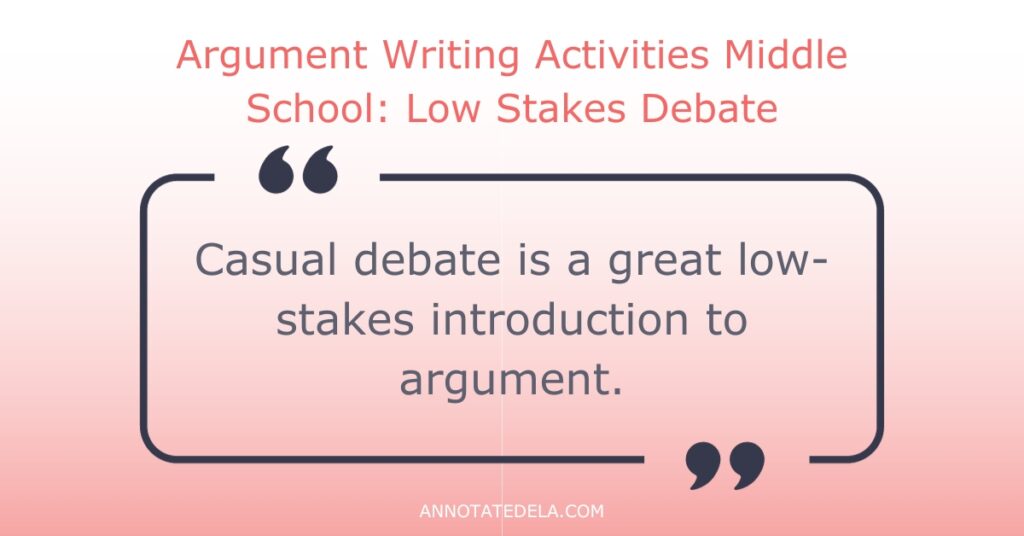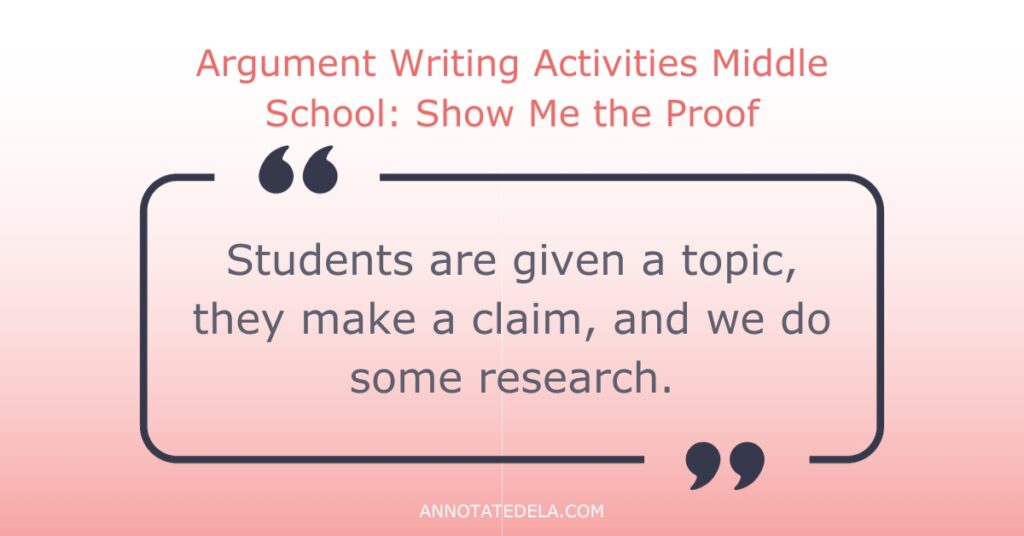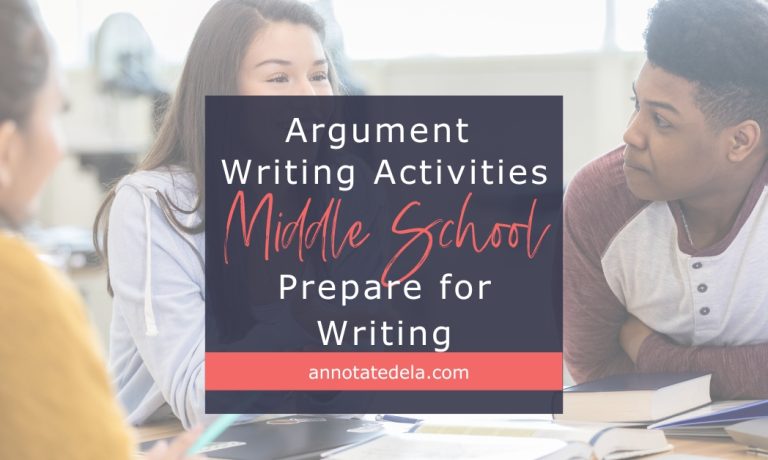Argument writing activities middle school are activities to prepare your students for the writing. These activities will build a foundation and help them find their voice.
I have made the mistake of jumping straight into writing. This is not the end of the writing world, but I have come to realize that before we get to the argument writing, there are activities that help my students become better writers before they even start writing.
The argument writing activities middle school will prepare your students for the writing. If you are looking for a casual way to have students make claims and practice argument writing skills, grab my free Which One? Bell Ringers resource.
Argument Writing Activities Middle School: Mentor Texts

First, we start with mentor text to analyze and evaluate the type of writing we will do. This is one way to effectively improve student writing.
Mentor text can also be referred to again and again throughout the writing process as we work through the steps of crafting an argument.
While we read the mentor texts I might ask students to notice:
- The evidence the author used to support the reasons
- For example, stories, facts, statistics
- I would also ask students to note if the author did a good job of influencing the reader, what could be better?
- Did the author use any ethos, pathos, or logos?
- What are the reasons that support the claim?
- We may even compare and contrast two different articles on the same topic?
Next, we take note of the structure of the writing – how the writing is organized. Students highlight and make marginal notes about the structure.
Mentor texts can be podcasts, speeches, articles, etc. Above all the text should be of high interest.
Some suggestions for texts are:
Why Wild Animal Don’t Make Good Pets
Why Should I Choose an Exotic Pet?
Students Who Lose Recess Are the Ones Who Need It the Most
Argument Writing Activities Middle School: Low Stakes Debate

Second, we build on the student’s strengths. Many students love to make a case for themselves, so we start with some informal casual debate on high interest topics.
Casual debate is a great low-stakes introduction to argument. Students can make claims and even provide reasons, but no research is needed yet. It is opinion based and safe.
Activities for casual debate
- Agree or Disagree: students move to one side of the room or the other to agree or disagree with statements
- This or That: students pick between two objects. Grab my free Which One? Bell Ringers
- Four Corners: students choose an option (there are 4 options hung around the room, generally in the corners, and students move to the corner they agree with or prefer and talk to their group about why they are in that corner.)
Argument Writing Activities Middle School: Show Me the Proof

Third, we move into not so casual debate.
Now that students have had a chance to casually debate, we move into a more formal debate. Students are given a topic, they make a claim, and we do some research. Articles for the research are provided for the students. In most cases, we have read the text during the unit and have spent time analyzing it.
For example, in sixth grade we read “Should Wild Animals Be Pets?” leading up to this prompt we have read multiple texts and articles on this topic. As a matter of fact, we have analyzed those articles as mentor text.
In eighth grade, we have multiple prompts, and they all deal with the unit topic of “Approaching Adulthood”.
Some of the prompts are: “What is the ideal voting age?” “When should adolescents be allowed to drive?” and other topics of interest. Just like in sixth grade, the eighth grade students have been reading many articles and texts on brain development and other research on these topics.
Philosophical Chairs
After students have made a claim and spent some time researching we do a Philosophical Chairs activity.
Philosophical Chairs is similar to “Agree or Disagree,” students will debate verbally, but a written structure with a claim and reasons is drafted. Students use this to support their argument.
Finally, the writing prompt is introduced. The writing prompt could be the same prompt used in the not so casual portion of the unit or it could be different.
Now the foundation has been laid and students have had the chance to work through the process step-by-step. The step-by-step process will continue during the writing process.
- Start with mentor text. Analyze and evaluate the text.
- Informal debate and discussion. Use activities like, “Agree of Disagree,” “This or That,” or “Four Corners”
- More formal debate and discussion. Students will have evidence from text to support their claims and reasons.
- The foundation has been set and it’s time to introduce the writing assignment and get to the writing.
If you want support on a casual way to engage students in making a claim, grab my free Which One? Bell Ringers resource.




